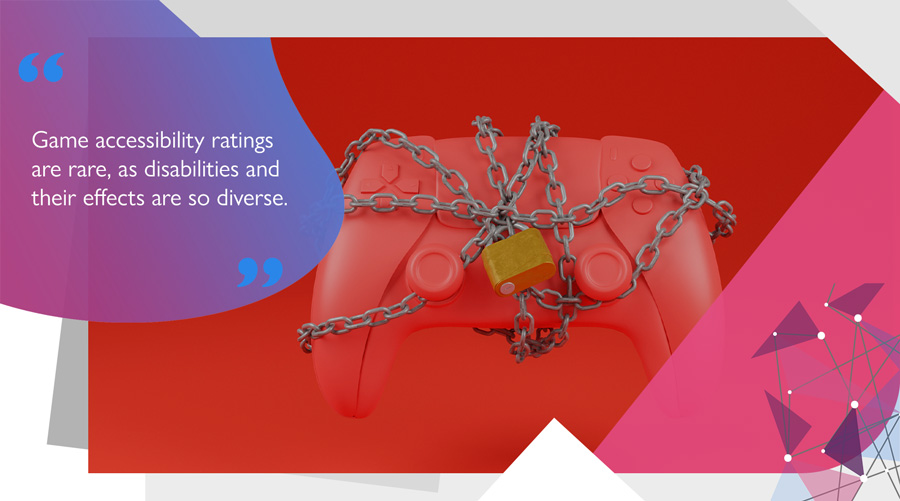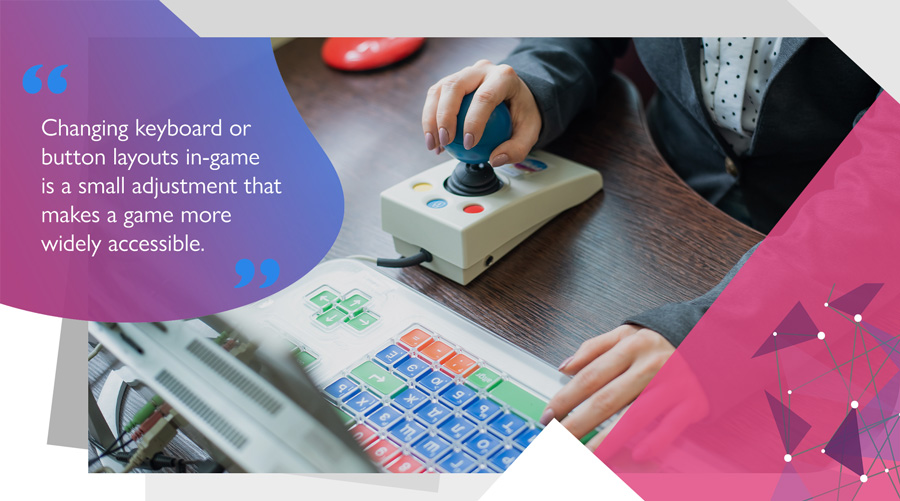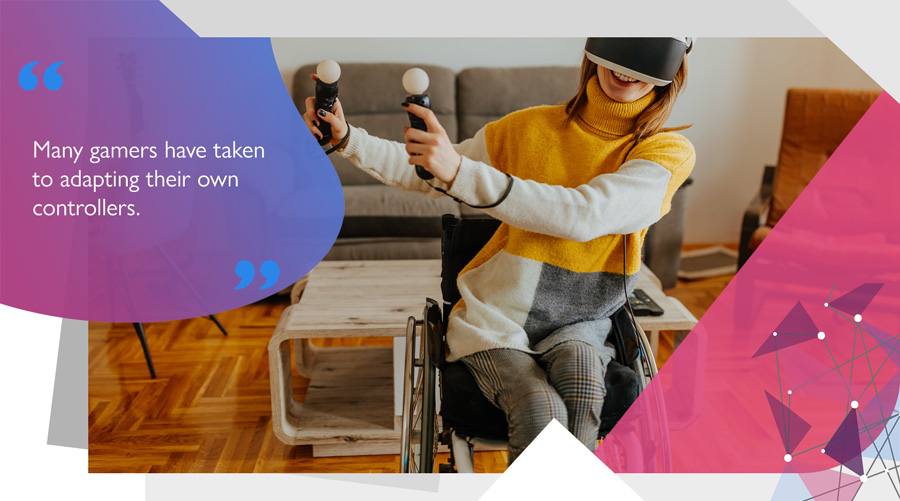A lack of accessibility options, due to narrowly focused game design, can exclude disabled gamers from a range of titles. This may make interaction with game content more challenging.
Gaming while disabled… is gaming
While there may be some differences in the ways disabled and able-bodied gamers play, research tends to separate the groups rather than compare. This compounds a distinctness reflected in the wider world. However, in the end, we all want to enjoy playing games.
Unsurprisingly, most gamers who identify as ‘disabled’ play games for fun or a challenge. For some there may be an extra underlying motive: gaming can be used to cope with health issues, manage depression, or distract from pain – but this is true for non-disabled gamers too.
The social aspect of gaming can also help break through the isolation some disabled people may encounter. The joy of exploring fantastical worlds and drive to accomplish incredible feats is no different, regardless of a person’s physical or mental condition.

Barriers to gaming
Accessibility in gaming has improved due to campaigning by charities like SpecialEffect, disabled gamers raising awareness themselves, and improvements in technology. Yet many disabled gamers still find the cost, skills and time required to access assistive tech to be prohibitive.
Game accessibility ratings are rare. As disabilities and their effects are so diverse, it’s hard to apply sweeping ratings. This can lead to players buying games they’re unable to play or complete. In some instances, these games may be non-refundable.
According to Scope, a UK charity working for equality for disabled people, 2 in 5 disabled gamers believe negative attitudes or the conduct of other gamers towards disabilities has impacted their gaming experience.
What is adaptive and accessible gaming?
While there are gamers with disabilities who do not need assistive or adapted technologies to play, this is not always the case.
For those that need them, features can be implemented within games or externally through assistive hardware or software. These technologies allow gamers with disabilities to play mainstream titles that were not designed or developed with accessibility in mind.
It is worth noting that these tools can also be used to facilitate access to games that are designed for gamers with certain disabilities or impairments.

Adaptive gaming features
Controllers and controller configuration
One-button games can be completed with only a single button input, whether that’s a mouse click, a key press (e.g. using only the spacebar) or any form of specialised controller. They are designed specifically for players with either physical or learning difficulties – but can be played by everyone.
Controller sensitivity adjustments are one of the most-used assistive technologies (again, according to the charity Scope). Changing keyboard or button layouts in-game is a small adjustment that also makes a game more accessible.
Adjusting difficulty
Lower difficulty settings allow greater flexibility for a range of disabilities – from slower or limited mobility to cognitive or reasoning impairments. With less pressure on reacting quickly and more room for error, success becomes attainable and the experience of playing more rewarding.
Sound settings
Fortnite is an example of a game which has an option to visualise sound effects. This allows gamers with hearing impairments to track in-game noises and the direction they come from, helping the player to locate in-game action and enemies.
Other games use captions to reinforce understanding and minimise missed information.
Visual adjustments
Many games have settings to help those who have a colour vision deficiency. Adjusting RGB settings on monitors for games lacking in-built options will help, but may impact the experience or result in loss of fidelity.
Audio-only games and screen readers for in-game text can help those with visual disabilities. Sound and haptic feedback can also be used to guide players through objectives.
Some games allow features or menus to be relocated to different areas of the screen. This is helpful for players with no peripheral vision or other vision restrictions.
In-game chat
Some online multiplayer games have developed tools to adjust in-game chat for those with sensory issues. These allow an element of control for a sometimes unruly aspect of gaming, and helps to make community-driven in-game content accessible.

Hardware-driven accessibility for disabled gamers
Adaptive controllers provide a level of modification to game input that makes games more widely accessible. These range from larger paddles on standard controllers, to joysticks controlled by the mouth and feet, or machines that sense eye movements.
The Xbox Adaptive Controller is, at the time of writing, the only adaptive controller to have been released by a mainstream console manufacturer.
Many gamers have taken to adapting their own controllers. The level of customisation varies: from simple additions like foam or putty extensions for buttons, to changing button placement entirely.
To facilitate one-handed gaming or provide accessibility for players with restricted mobility, mouse emulators can be used to simulate a mouse with a keyboard. Competitive gaming PC mice with programmable side buttons are also available.
Disabled representation in gaming
Some disabled (and able-bodied) gamers have voiced a need for more frequent and accurate representation of disabled people in gaming.
Independent characters, whose disability isn’t their defining trait, are wanted in place of disabled characters portrayed as victims. The theme of ‘fixing’ disabilities with superpowers or futuristic prosthetics can also be problematic.
Despite its controversies, GTA V is often praised for the portrayal of Lester Crest – a disabled main character. Despite having a chronic wasting disease, Lester is independent and quick-witted. He has a role in driving the plot forward, and often helps the playable characters rather than being the person in need of help.
More visible representation of disabled characters and gamers could help contribute to a shift in attitudes, which doesn’t just address issues of prejudice in gaming culture, but also allows developers and publishers to better appreciate the merits of inclusive game and hardware design.
At Ghost Gamer Broadband, we like to celebrate all aspects of our favourite past-time, and think it’s important to analyse those issues which may sometimes be overlooked.
If you enjoyed this post, check out some of our deep dives into other topics, such as women in esports or whether games should have age ratings.

